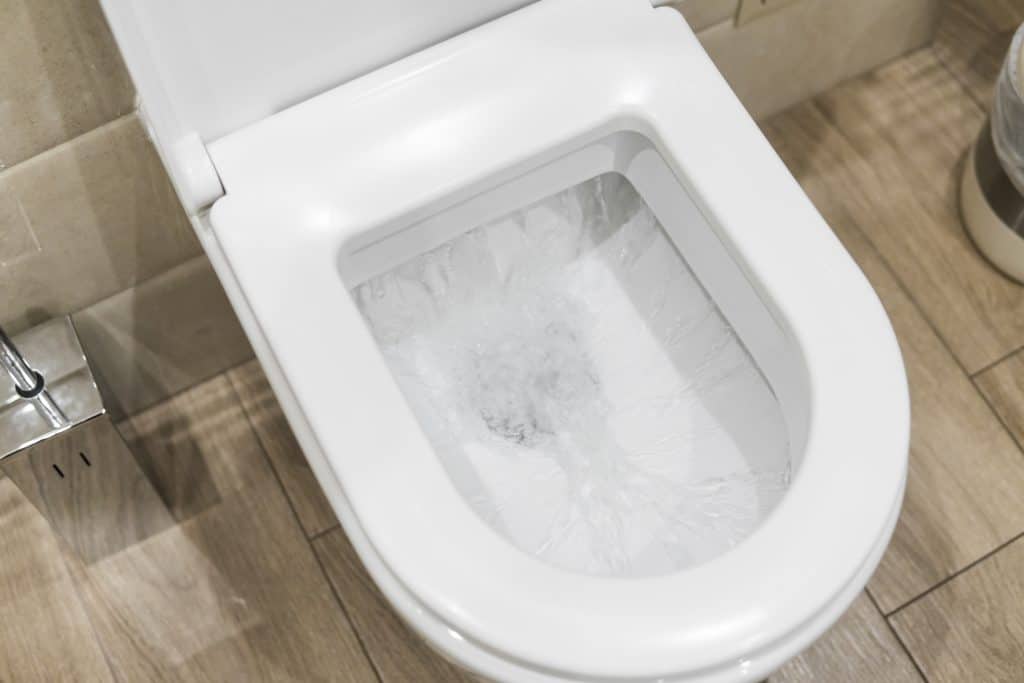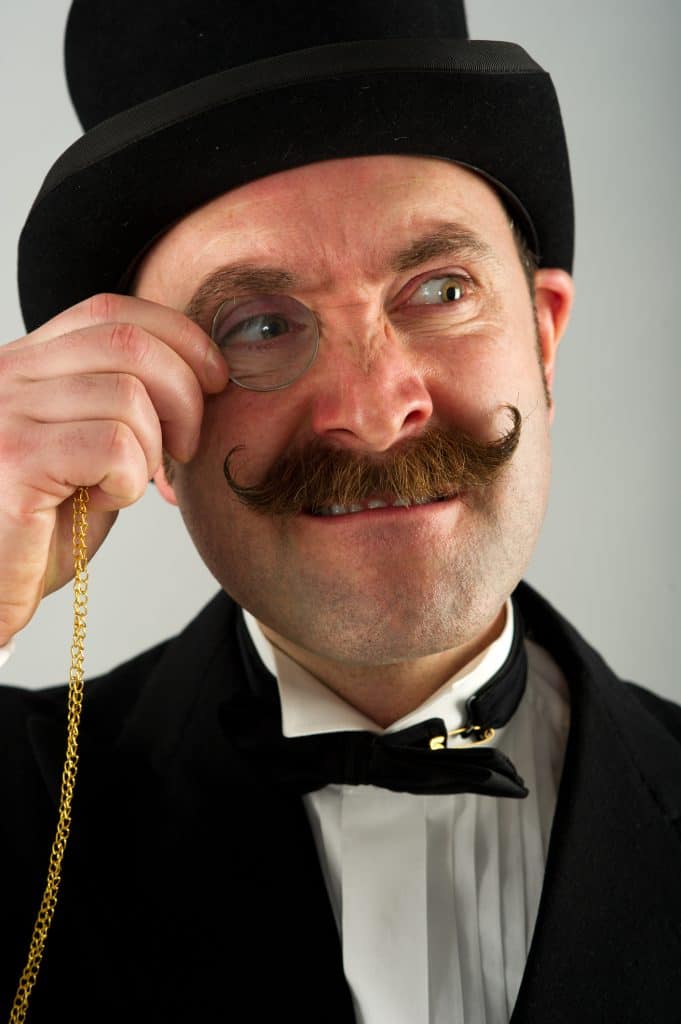So, let’s talk turkey: “eau de toilette”.
How do you even say that, anyway? Is that a foreign language? Toilet? What in tarnation?
Don’t worry: it has nothing to do with the toilet you do your business in.
“Eau de toilette”, meaning “toilet water” in French, is a common term in perfumery. It refers to the “concentration” of perfume oils in a perfume, and is only one of several concentrations, which include eau de cologne, eau de parfum, and extrait de parfum, amongst others.
But what exactly is a “toilette”? And what is a “concentration”?
Let’s take a closer look.
What Does “Toilette” Mean?
So, let’s address the elephant in the room: the word “toilette”.
Does it mean “toilet”? Yes and no.
If you mean “toilet” in the sense of the porcelain throne, the thunderbox, the chodbin, the loo, the WC, the john, the commode – think again.
Instead, the word “toilette”, and the coinciding English word “toilet”, has a different meaning, one which is, in this day and age, pretty antiquated.
I’ll lean on good ol’ Merriam-Webster. “Toilet”, in this sense, refers to, “the act or the process of dressing and grooming oneself”.

For example, “The duchess found the princess looking rather disheveled and attempting to rectify matters at her toilet,” or, “Mr. Garibaldi underwent an elaborate toilet ritual each morning, with a bath, a wet shave, a prodigious dose of pomade to complete his elegant coiffure, and not a few splashes of eau de cologne as a touche finale.”
Looking at such sentences (both of which I invented) from a 21st century point of view might seem strange, especially considering how loaded the word “toilet” is. But the connotations of words change all the time – take the word “gay”, for example.
In ye olden days – say, the 18th, 19th, and early 20th centuries, when this word was in common use – all elegant ladies and gents had their own toilet regimen.
“Toilet”, in this sense, really just means, “getting ready”.
The English word derives from the same French word, “toilette”, which originally referred to the toilette cloth, made of toile fabric, on which grooming items were placed for one’s morning toilet.
And what might you expect to find on a toilette cloth while carrying out your morning toilet? Why, of course, a bottle of eau de cologne or eau de toilette, which no rich and elegant lord or lady could go without.
Perish the thought.

What Is an Eau de Toilette?
So, now that we’ve gotten the whole “toilette” business out of the way, let’s come to the matter of “eau de toilette”.
Eau de toilette, which now you know to mean “toilet water” but in the right way, originally was something of a catch-all term for perfumes that were applied while conducting one’s toilet.
These original eaux de toilette (in French, nouns that end in -eau, -au, or -eu take an “x” instead of an “s” in their plural forms, ex. château -> châteaux, jeu -> jeux) differed from the eaux de toilette of today, in that they were much lighter and, like aftershaves, intended to freshen and tone the skin after a bath or a shave just as much as they were intended to perfume the body.
In fact, for most of perfume history, even up until recently, most perfumes did not come with a spray atomizer, but rather were splashed or dabbed on the skin directly during one’s toilet in the morning or before going out at night.
However, things have changed since the days of splashing and skin freshening.
In modern perfumery, eau de toilette refers to a specific “concentration” of perfume.
What Does “Concentration” Mean?
“Concentration” in perfumery refers to the amount, or concentration, of perfume oils compared to alcohol in a perfume.
Any modern fragrance, barring oil or water based perfume, is made up of a blend of perfume oil, the actual “smell” of the fragrance, and alcohol, which helps to diffuse the smell of the perfume in the air as it evaporates.
The greater the concentration, the more perfume oil present in the composition.
While theoretically you could make a fragrance with 100% perfume oil concentration, almost all perfume oils need to be diluted in alcohol due to the corrosive nature of essential oils and aroma chemicals in their undiluted state.
Therefore, most perfume brands turn to one of a few different commonly accepted perfume concentrations when making their fragrances.
What Concentration is Eau de Toilette?
The concentration of an eau de toilette is eau de toilette concentration!
By which I mean: eau de toilette is one of those commonly accepted and used perfume concentrations.
In fact, eau de toilette is perhaps the most common perfume concentration. Most men’s fragrances launch as eaux de toilette – take Dior’s Sauvage, Hermès’ H24, and Chanel’s Bleu de Chanel, for example – and many women’s fragrances are released in eau de toilette concentration as well.
Eau de toilette is one of the lightest perfume concentrations. Modern eaux de toilette are concentrated at between 5-15% perfume oil to alcohol. Compare that to the heavier eau de parfum and extrait de parfum (or simply parfum) concentrations, which are dosed at 15-20% and 20-40% perfume oil to alcohol respectively, and the lighter eau de cologne and eau fraîche concentrations, which are dosed at 2-4% and 1-3% perfume oil to alcohol.
Effectively, eau de toilette is the middle point between the heavier duty concentrations and the lightest concentrations, and therefore is highly favored by many brands when they create their perfumes.
Because of their lighter concentration, eaux de toilette don’t usually last all that long on the skin, at least when compared to eaux de parfum or extraits de parfum.
However, eaux de toilette excel in terms of their projection and sillage, meaning that they radiate off your skin so that everyone can smell you, and leave an irresistible trail of scent in your wake.
They just won’t do that for long. But for some people, being smelled by others might be more important than having a perfume on your skin for long periods of time.
If you’re one of those people, perhaps an eau de toilette, rather than an eau de parfum or parfum, is the concentration for you.
The Final Word
So, as we’ve seen, eau de toilette has nothing to do with, to use a less brusque turn of phrase, the powder room.
Instead, “toilette”, and the matching English word of “toilet”, has an antiquated meaning, previously defined as the act of getting dressed and groomed. An eau de toilette in modern parlance refers to a “concentration” of perfume oils in a perfume, and is only one of many different concentrations in perfumery.
So the next time you see the words “eau de toilette” on a perfume in your department store, don’t worry. It’s not “toilet water” you’ll be smelling, but a proper perfume.




